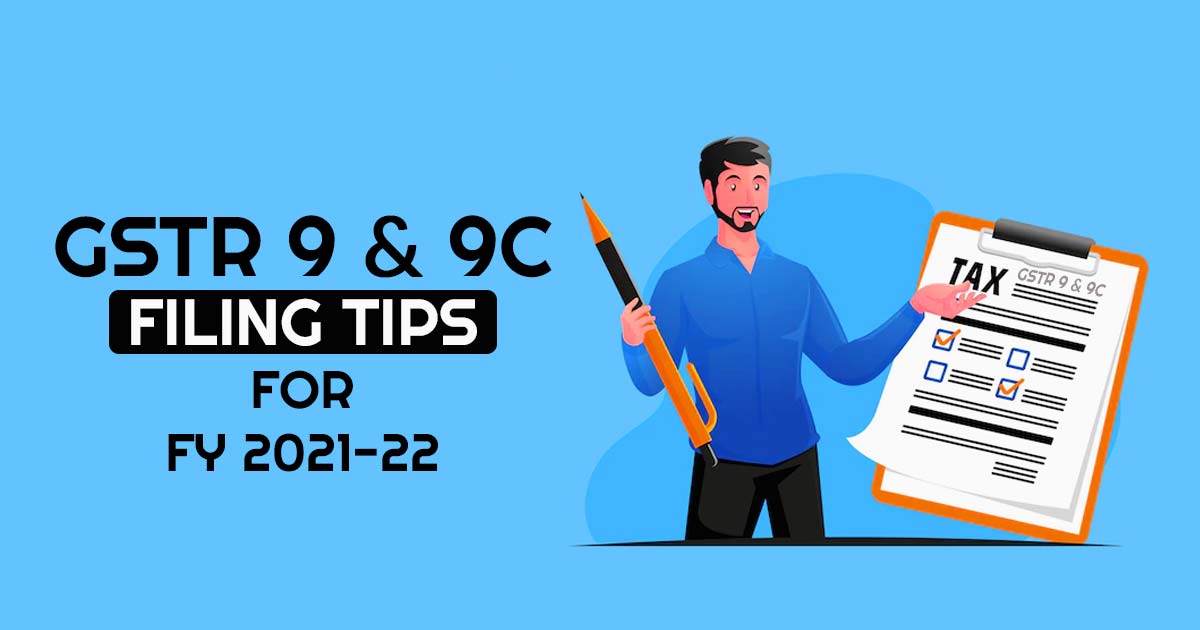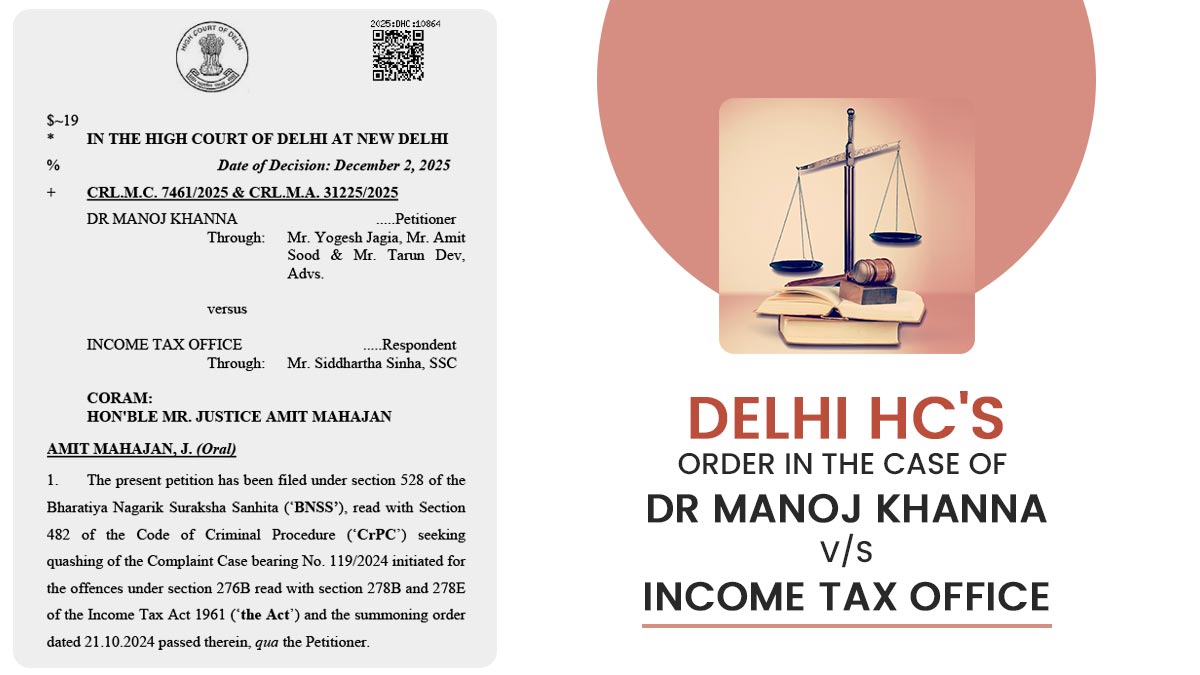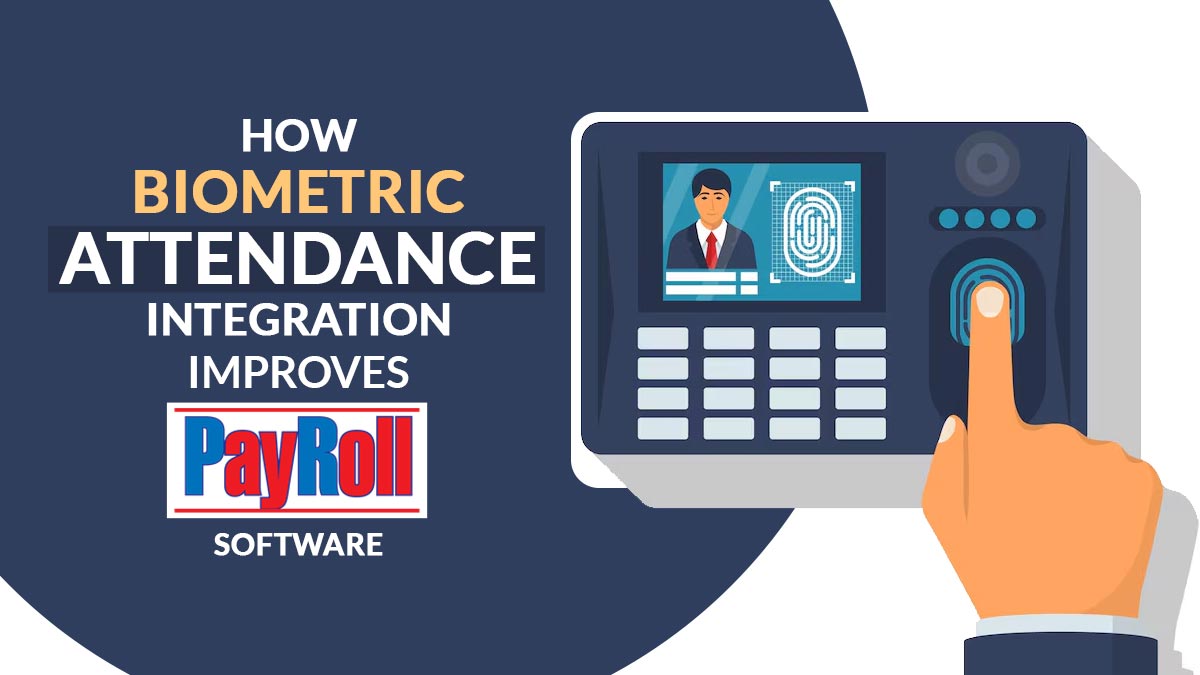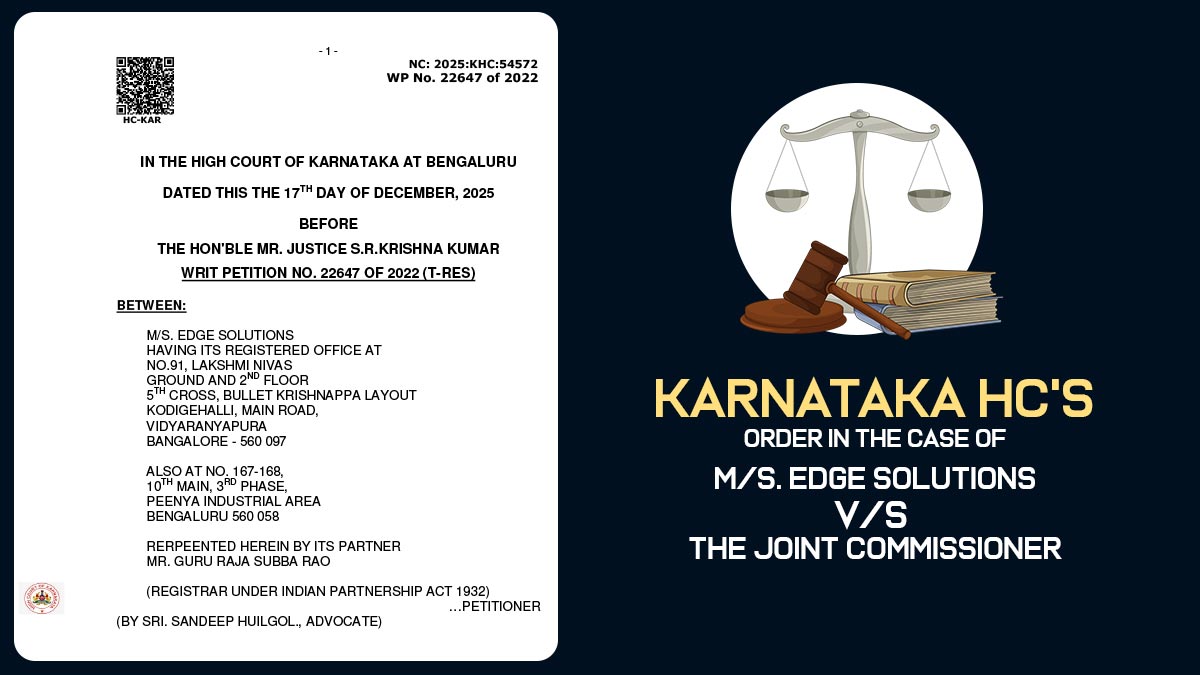
The department would have initiated providing the notices and asking for the details by comparing the information shown in GSTR 9/9C Vs GSTR 3B. Acknowledging distinct amendments in the GST law in the recent former time. The article discusses furnishing transparency on annual returns (Form GSTR 9) filing and reconciliation statement (Form GSTR 9C) including needed reconciliations, best practices, advanced issues & solutions, and tips as applicable for the financial year (FY) 2021-22.
Last date: 31st Dec 2022. The last date which was extended in the former years would not be anticipated to get extended for FY 2021-22.
Need GSTR- 9 and 9C Filing Software
Latest Amendments in GSTR 9 Form Annual Returns for FY 2021-22
- Table 4 – revisions, credit notes, and debit notes could not be displayed as net figures in B2B, B2C, etc. now. Tables 4I to 4L are to be disclosed separately from FY 21-22.
- Table 5 – Exempted and Nil-rated would get consolidated in the ‘Exempted’ column. Table 5F – Non- GST would be mentioned separately from FY 21-22.
- Table 17 – HSN outward information mandated from FY 2021-22 onwards. (GSTR 1 consolidated data can be used for table 17)
- HSN disclosures are to be performed at a 6-digit level (when T/o > Rs. 5 crores) and 4-digit level (when T/o < Rs. 5 crores for B2B only)
- Clarification that disclosures in GSTR 1 tables 9A, 9B & 9C must be disclosed in tables 10 & 11 of GSTR 9.
Below mentioned are the exemptions made from before time:
- Table 5 – Revisions, credit notes, and debit notes could be displayed as net figures in table 5.
- Table 6 – ITC bifurcation into ‘inputs’/’input services’ is not compulsory, total value could get consolidated under ‘Inputs’. From FY 2019-20 – under ‘Inputs’ & ‘Capital Goods.
- Table 6 – It might consolidate ITC beneath the GST RCM from registered and unregistered individuals beneath the registered persons’ table.
- Table 7 – All ITC reversals might be consolidated beneath Table 7H, but TRAN reversals are to be displayed in a separate way.
- Part V – Reversal/claim of Input tax credit in the former year might not be filled (T12 & T13)
- Table 15, 16 & 18 – Information on the Refund, data on inward supplies and deemed supply, HSN inward information would remain optional.
Points to be Noted While GSTR 9 & 9C Filing for FY 2021-22
- The assessee would not require to file the yearly return in FORM GSTR-9/9A for FY 2021-22 if their aggregate yearly turnover is up to Rs. 2 crores. (If 9 and 9C are not required)
- According to table 4, the liability should acknowledge as a final liability (as per books) no matter what the liability disclosed in GSTR 3B + Form DRC-03 during the FY is.
- In various places, it has been cited as ‘April – September’, but the same should be read as ‘April-November’ treating the current postponement of timelines vides NN 18/2022-CT.
- Via Form DRC-03 the payment is to be made. Using the ITC under CGST rules would be restricted but the same could be disputed as per the interpretation that came from section 49(4) r/w Rule 86(2). Further, the GST portal permits the same Input tax credit usage.
Latest Changes in GSTR 9C Form (Reconciliation Statements)
There are no revisions in the relaxation furnished:
- Table 5B – 5N – Can regard all turnover corresponding adjustments in Table 5O
- Table 12B & 12C – Optional to fill this ITC information.
- Table 14 – Optional to fill expense-wise ITC claim information.
Note-1: Pre-requirement to 9&9C – all GSTR 1 & GSTR 3B for FY 2021-22 should be filed.
Note-2: From FY 2020-21 GSTR 9C would not be required to get signed via CA/CMA and would be acknowledged as an assessee furnished the form on its own. Hence, Part B (Auditor Certification) and Management Representation Letter does not need.
Note-3: Form GSTR 9 & Form GSTR 9C – once filed could not get amended.
Requirement for the Proper Reconciliation
- Turnover – Audited Financial Statements (AFS/Books) vs Table 5A (regard all GSTINs)
- Table 5N Vs Table 17 – As table 17 is now compulsory, the same reconciliation can be an internal check process.
- Outward taxes – Liability according to the Books Vs Liability under GSTR 3B + DRC-03 (if any) [ensure RCM liability is comprised]
- Outward taxes – Rate-wise liability according to workings Vs Rate-wise Liability under the books.
- GSTR 1 Vs GSTR 3B (the same shall support update GSTR 9)
- Inward taxes – Credit under the books Vs Credit under GSTR 3B
- Closing balance [Cash + Credit] – Books Vs GST portal (acknowledge all GSTINs)
- Confirm and furnish for Spillover transactions of former Financial year and hold tracker for subsequent Financial year.
- Find out the rectification and revisions performed above the 30th November timeline. (Revised from 20th September).
Note: Generate invoice-level reconciliations- It proves to be an effective practice to assessees that would support the filing process of the yearly returns however it indeed detects the errors and furnished the details to the department in the forthcoming time.
Useful Tips for FY 2021-22 GSTR 9 & 9C Filing
- Maintain 9 & 9C workings with links to all the related information. Avoid keyed-in workings.
- Maintain separate information of ITC claimed, reversed, and re-claimed when the assessee meets the conditions stated u/s 16.
- For the revisions, the outward register is to be maintained with original values, so that the same shall be supported while tables 4 & 5 of GSTR 9.
- Invoice level GSTR 2B Vs ITC under books reconciliation is to be achieved for Table 8 disclosure in GSTR-9.
- Credits under books – unclaimed because of non-matching with GSTR 2A/2B. Pass as expense in books of accounts of FY 2022-23 and confirm option of recovery from continuing vendors.
- Furnishing the “Annual GST – Management Report” which comprises the following:
- Folder with final workings and filed Form GSTR 1, 3B, GSTR 9 & 9C for the FY.
- Reconciliations for the FY – Outward, Inward & RCM – birds’ eye view
- Causes for variances and action is taken (summarily)
- In which the other liability was seen- summary details + payment documentation
- Suggestions on internal accounting/processes/reporting going forward
Note- Fill both forms concurrently, verify the precision, and make pending payments, and after that proceed to file.
Advanced Problems with Their Resolutions
In the below section, we have defined some advanced problems when filing GSTR 9 and 9C forms for FY 2021-22 with their effective solutions:
Tax Liability of Former Year Paid in the Present Year
The same shall be shown in table 10 of the former year GSTR 9. In the present year GSTR 9, the same must not be shown in a repetitive way and the cause for the variance in the payable tax vs paid in table 9 in the present year should be maintained for offspring.
Data of Utility for Table 6M
Tables 6B & 6H are regarded as auto-populating data in table 8 for GSTR 2B reconciliation. The same might comprise the ITC of the tax durations concerned with the former duration. Hence table 6B could regard data for the year and table 6M could acknowledge the former year concerned with the Input tax credit claimed in the present year for the simpler disclosure and indeed the table 8 reconciliations.
Table 8C Versus 13 in Form GSTR 9
The reason for the differences in – Table 13 comprises the GST Input tax credit(ITC) on the imports and inward supplies responsible for the reverse charge that should not be shown in 8C. Indeed the goods or services in transit are required to be shown in table 8C but not in table 13. (those invoiced earlier, however, the goods/services obtained in the following tax period)
GSTR 9 Credit Note Disclosures
The wording in table 4 of GSTR 9 is not clear since the heading is transactions for the year while CN seeks against invoices mentioned before the discussion directed to the interpretation in which CNs would seek in the subsequent fiscal year in the stipulated duration can be acknowledged. CNs increases in the subsequent fiscal years should be shown in the mentioned duration as the same does not pose a transaction of the former financial year.
Read Also: Short Brief of GSTR-3B New Table 3.1.1 for ECO U/S 9(5)
Detail Analysis of Table 8D
The problem might get emerge in which 2A/2B would be less than the claimed ITC in GSTR 3B. Rule 36(4) does not securely authorize the section in the GST act yielded as disputed. But from January 2022, GSTR 2B matching is compulsory. The assessees would recommend confirming that the claimed ITC would be as per the valid tax invoice, eligibility conditions, and reflection in GSTR 2B that goes forward.
Handling the Deferred GST ITC Register
Post restriction on the input tax credit claim as per the GSTR 2B reflection of various qualified ITCs might not get claimed and are maintained in the deferred ledgers. For that, the disclosures should be acknowledged in Table 13 of GSTR 9 claimed in the duration of 1st Apr- 30th Nov 22. In GSTR 9C – Table 12A to retain the whole ITC under the books, table 12C can correspond with GSTR 9 table 13 figures. Likewise, the other disclosures in the following fiscal year would be in table 6B/6M of GSTR 9, and Table 12B of GSTR 9C.
Negative GST ITC in Table 4C of GSTR 3B Form
The negative ITC (meaning tax liability) in table 4C of Form GSTR 3B mentioned in table 9- GSTR 9 that the same amount would be acknowledged in the tax furnished but the kind of values does not been shown automatically and hence the same might require to get summed in table 7H along with that in table 9 (tax levied) to provide the assurance in reconciliation. The same shall affect the identical disclosures in table 9 of GSTR 9C.
GSTR 9C Table 7E Versus 9
It is not a mandated reconciliation the same shall verify the taxable value under the books as per the rate that matches the taxable values as reconciled in the former tables. You must confirm that table 9 of the GSTR 9C would get furnished under the books whatever the disclosure in the GSTR 3B or GSTR
Examination of Table 8K
If the Input tax credit is missed then it does not direct that the same ITC would get reduced from the electronic credit ledger. It indicates to the department that the extent of ITC would be available on the record to the taxpayer however it does not been claimed.
Calculation of the Interest
Post 5 years a clarification on the applicability of the interest is being received that applies to the late payment of the tax liability effective retrospectively from 1st July 2017, that is
a. Output liability – At 18% p.a rate- For the liability of the month is displayed in the month – net liability, if not gross liability whatever ITC balance availability is (disputable view)
b. RCM liability – At an 18% p.a rate – The gross basis as per levied in cash.
c. ITC – At 18% p.a. rate- Exclusively when ITC is been claimed ‘wrongly and used more than the balance remains in the electronic credit ledger.
d. In GST no interest is levied on the interest. The interest would get suppressed after the related taxes would get levied.
Final Solution
The filing activity Form GSTR 9 & 9C is critical since the same would be anticipated to represent the final values with corrections if there are any for the fiscal year. For the purpose of scrutiny, the council would use the same as a document. Hence the proper procedure is to be complied with for confirming the precise data fetch and the reporting is vital.










Respected,
ITC of FY 2020-21 claimed in F Y 2021-22, under which table the values are to be reported in GST annual return of F Y 2021-22
Under table 6M
If a company’s turnover is more than 5 crore in aggregate but GSTIN-wise turnover is lower than 5 crore in each state. is it mandatory to file GSTR 9 and 9C in that case
Yes